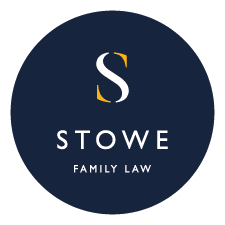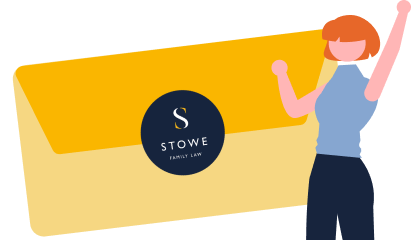Do the family courts understand coercive control?
Unfortunately, as a family lawyer, the words “coercive” and “controlling” are ones I hear far too often. But what do these terms mean and how can you evidence this behaviour?
This is a question I’ve been reflecting on over the last couple of days following the recent judgment of Hayden J in the case of F v M [2021] EWFC 4.
For those who work in law enforcement – whether that be the police, lawyers, Judges – it can be challenging to assist those subjected to this very painful and almost hidden area of domestic abuse.
How can we identify it? How can we prove it? How can we help?
This new judgment is entirely welcomed by those who practice in this area, and I hope it will encourage victims of this terrible abuse to understand what is happening to them (and sometimes sadly their children), come forward, and ask for help.
The facts of the case of F v M [2021] EWFC 4
The case centres on a father’s application to spend time with his two young children. The proceedings had been lengthy (beginning in 2017), and were procedurally very difficult, with Justice Hayden being the 16th Judge to hear the case.
I will start with a brief background to the case, the mother and father met at university, although it was not long before the father persuaded the mother to drop-out.
They were married in July 2014 without the knowledge of the wife’s family. They had two children and separated in Sept 2017, thanks to the mother’s parents’ continued support, who had been desperately worried about her for a long time.
The father then remarried in July 2018. His current wife had two children from a previous marriage who initially lived with her, but they have now been removed and placed with their father. It is clear from the judgment that those involved in this case believe she is also the victim of the father’s particular patterns of abuse.
The mother’s case was that she had been the victim of cohesive and controlling behaviour perpetrated by the father during their relationship. She sought to introduce evidence regarding the father’s relationship with his new wife, which bore all the same hallmarks of abuse that hers did.
The father’s new wife refused to accept or believe she was the victim of abuse by the father, despite her own family – including her first husband and father of their children – giving compelling evidence to the contrary.
Sadly, she has paid a heavy price for this loyalty (including the removal of her children), but I remain hopeful (as did the Judge) that she will find her way back to them in time. From reading the judgment, it seems that her family loves her very much and will offer their support when/if the time comes that she’s ready to ask for help.
Unfortunately, the Judge at first instance disallowed the introduction of any evidence pertaining to the father’s new wife. This was successfully appealed in the Court of Appeal, and the case was transferred to the High Court.
Justice Hayden concluded that:
“the consideration of both “cases” together served to illuminate the sinister, domineering and, frequently, tyrannising complexion of F’s behaviour, to a degree which would not have been fully appreciated had the cases been severed.
It is the chilling repetition of identical behaviours, with two very different women of different age and background, which casts evidential light and does so in each individual case.”
The Judge found the father to be
“a profoundly dangerous young man, dangerous to women who he identifies as vulnerable and dangerous to children. The risks he presents to women are not only to their emotional and physical well-being but also, in the light of my findings, to their sexual safety.
It is clear that he has the capacity to cause much harm and distress to those who cross him more generally, particularly those within the sphere of the women he controls. It has been a disturbing case to hear.”
The legal definition of coercive and controlling behaviour
In his judgement, Hayden J highlights that there is no legal definition in family law of “coercive and controlling behaviour” and there is very little case law which sheds any light on its definition.
Therefore, it is no wonder that the family court – as in this case – has failed to deal with it appropriately.
Continuing, he commented: “my strong impression, having heard the disturbing evidence, in this case, is that it requires greater awareness and, I strongly suspect, more focused training for the relevant professionals”.
The Judge then turned to other sources and guidance to help define this behaviour.
In criminal law, Section 76 Serious Crime Act 2015 created the offence of controlling or coercive behaviour in an intimate or family relationship but did not define the behaviour in any context.
However, it does set out the criteria for the offence to be met in that the behaviour must be repeated and continuous, and have a serious effect on the victim which the perpetrator is aware of. Serious effect is defined as either causing fear (on at least two occasions) that violence will be used, or causing serious alarm/distress which has a substantial adverse effect on the victims usual day to day activities. The offence has a maximum penalty of 5 years imprisonment.
The Family Procedure Rules 2010 PD12J helpfully sets out definitions of coercive and controlling behaviour. In his judgement, Hayden J summarises it as follows:
Coercive behaviour:
A pattern of acts;
Such acts will be characterised by assault, threats, humiliation and intimidation but are not confined to this and may appear in other guises;
The objective of these acts is to harm, punish or frighten the victim.Controlling behaviour:
A pattern of acts;
Designed to make a person subordinate and/or dependent;
Achieved by isolating them from support, exploiting their resources and capacities for personal gain, depriving them of their means of independence, resistance and escape and regulating their everyday activities.
Hayden J also refers to Home Office Guidance published pursuant to Section 77 (1) of the Serious Crime Act 2015, which sets out examples of behaviour which could be coercive and controlling in nature, including:
Isolating a person from their friends and family
Monitoring their time
Monitoring a person via online communication tools or using spyware
Taking control over aspects of their everyday life, such as where they can go, who they can see, what they can eat, what they wear and when they can sleep
Depriving them access to support services, such as specialist support or medical services
Repeatedly putting them down such as telling them they are worthless
Enforcing rules and activity which humiliate, degrade or dehumanise the victim
Forcing the victim to take part in criminal activity such as shoplifting, neglect or abuse of children to encourage self-blame and prevent disclosure to authorities
Financial abuse including control of finances, such as only allowing a person a punitive allowance
Control ability to go to school or place of study
Threats to hurt or kill
Threats to harm a child
Threats to reveal or publish private information (e.g. threatening to ‘out’ someone)
Preventing a person from having access to transport or from working
Disclosure of HIV status or other medical condition without consent
Hayden J emphasised that this type of abuse will often be tailored to the individual circumstances. For example, in this case, the father controlled the mother’s food intake by only giving her part of his meals.
Hayden J suggested that this list should be viewed as a checklist instead of an exhaustive list that should then prompt questioning and inquiry.
So how do we define coercive and controlling behaviour in the context of family law?
Hayden J clarified:
“Coercion will usually involve a pattern of acts encompassing, for example, assault, intimidation, humiliation and threats.
Controlling behaviour involves a range of acts designed to render an individual subordinate and to corrode their sense of personal autonomy.
Key to both behaviours is an appreciation of a ‘pattern’ or ‘a series of acts’, the impact of which must be assessed cumulatively and rarely in isolation.”
It is clear that the literature has one thing in common: this form of abuse is continuous.
On its own, each individual act may not cross the threshold, but when taken as a whole, it shows a pattern of behaviour which is coercive and controlling in nature.
As Judge explains:
“It is crucial to emphasise that key to this particular form of domestic abuse is an appreciation that it requires an evaluation of a pattern of behaviour in which the significance of isolated incidents can only truly be understood in the context of a much wider picture”.
Hayden J also highlighted the need for professionals to be more alive to the issues this type of abuse can cause.
Recognising signs of coercive and controlling behaviour
In this case, the father portrayed himself as the victim to many professionals, including the police, which was unfortunately accepted by them.
A perpetrator’s ability to convince and persuade is of course what makes them so effective in carrying out this form of abuse, but Hayden J goes on to say that any professional involved in these types of cases must be alive to clues, hints, indicators and triggers in what people report:
“which might stimulate wider forensic curiosity and precipitate investigations of greater subtlety and nuance”.
What can the family law sector do to address this issue?
As the Judge says:
“Broader professional education on the scope and ambit of coercive and controlling behaviour is likely…to generate greater alertness to abuse of this kind which too frequently lies buried or only superficially investigated.”
And I agree. Hopefully, this article will help people to understand the nature of this horrendous form of abuse.
Help and support
If you are in a relationship involving coercive and controlling behaviours – help and support are available.
- National Domestic Violence Helpline – 0808 2000 247
- The Men’s Advice Line, for male domestic abuse survivors – 0808 801 0327
- The Mix, free information and support for under 25s in the UK – 0808 808 4994
- National LGBT+ Domestic Abuse Helpline – 0800 999 5428
- Samaritans (24/7 service) – 116 123
If you or anyone with you is at risk of harm or in danger, please call the police immediately on 999.
Support from a family lawyer
If you would like advice on how the family courts handle coercive and controlling behaviours and your legal situation, please contact our Client Services Team to speak to one of our specialist domestic abuse lawyers here.



i went through it i took my ex all the way through court he dinied it and did that abou 5 times i was not allowed to give my side of the events as he played the system to get off when he attacked me and burst my eardrum i had him removed and yet socialworkers still made out i was the violent one they took my children my ex stalked me had to leave the area they allowed him to tell lies about me so they could take four of my children away this happened in scotland i still have messages from him on facebook according to my ex they adoopted my daughter out on my birthday i dont celebrate anything anymore for my life has been ripped apart no mother should have to go through this even worse the socialwork told the council i was never getting my children back and had me turned out of the house i was living in its a disgrace and when i moved back upto sctland my daughter had a visit from child protection about a freind she had they changed the facts saying its was my daughter selling herself tp her father freinds fact her father had not got any freinds he was an alcaholic and he died from it disgusting behaviour by socialworkers
I had been going through a very controlling marriage and it was disguised with love and calmness. Things just didn’t add up and the conflicting energies of what I saw and what my body feeling overtime made me ill. Over a decade later, after seperation the financial abuse was exposed; compliant to the police was made. It has been just over a year since the controlling and coercive abuse was reported. So far nothing action has taken place. It’s very distressing.